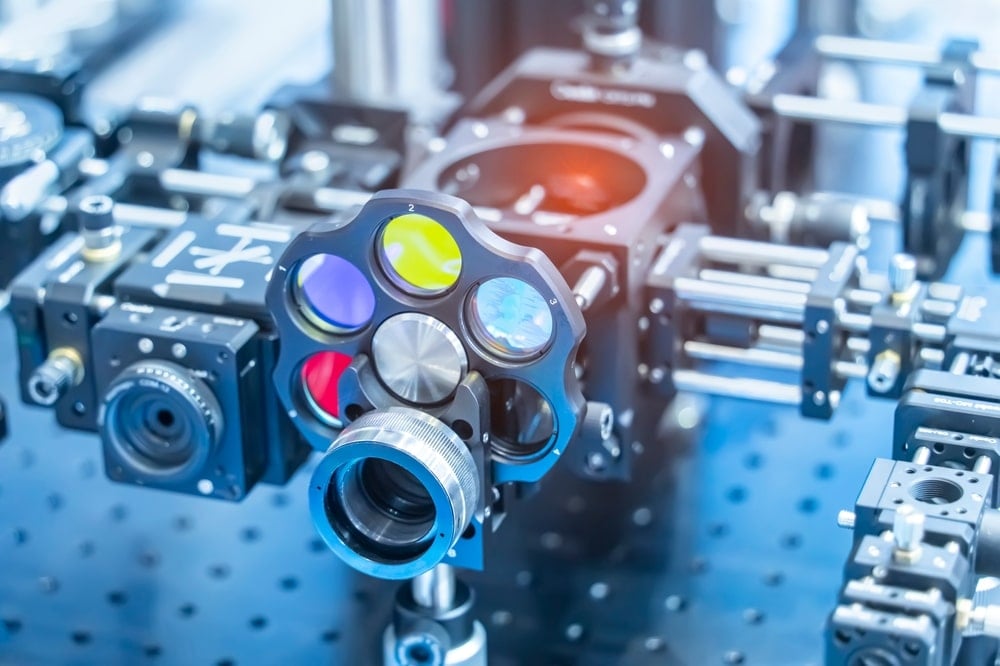Professor Barbara Piętka from the Faculty of Physics at the University of Warsaw, a key proponent of the project overseeing the research direction, stresses that “perovskites showcase remarkable adaptability: encompassing polycrystalline layers, nano- and micro-crystals to bulk varieties. Their applications span from solar cells to lasers.
“Some variants, like the CsPbBr3 (cesium-lead-bromide) material utilized in our study, are remarkably effective semiconductors for optical purposes due to their exceptional exciton binding energy and oscillator strength. These qualities facilitate enhanced interactions with light, significantly diminishing the energy needed for nonlinear light amplification.”
Advancements in Crystal Synthesis Techniques
The team employed reproducible and scalable synthesis techniques to produce perovskite crystals with meticulously determined dimensions and shapes. They utilized a microfluidic technique where crystals are cultivated from a solution in narrow polymer molds that can be shaped by using a template. A crucial aspect involved regulating the solution concentration and growth temperatures while sustaining a saturated vapor atmosphere of the solvent.
This method, along with the utilization of nearly atomically smooth gallium arsenide templates crafted via electron-beam lithography and plasma etching at the Łukasiewicz Research Network – Institute of Microelectronics and Photonics, led by Anna Szerling, resulted in the formation of high-quality single crystals. Consequently, CsPbBr3 crystals can be molded into diverse shapes ranging from simple angles to smooth curves, representing a remarkable feat within the realm of crystalline materials. They can be produced on any substrate, improving their compatibility with current photonic systems.
Mateusz Kędziora, a PhD student at the Faculty of Physics University of Warsaw and the primary author of the study responsible for the crystal synthesis techniques, notes, “These high-quality crystals create Fabry-Pérot type resonators on their surfaces, enabling substantial nonlinear effects to be observed without requiring external Bragg mirrors,” providing promising prospects for the implementation of these materials in integrated photonic circuits.
Breakthroughs in Polaritonic Lasing and Condensate Development
The showcasing of polaritonic lasing from the corners and surfaces of microwires signifies another notable advancement.
“The wavelength of the emitted light is altered by the influence of intense light-matter interactions, suggesting that the emission results from the establishment of a non-equilibrium Bose-Einstein condensate of exciton-polaritons. This is distinct from conventional lasing driven by the Purcell effect (weak coupling), instead indicating emission from a condensate within the robust light-matter coupling regime,” clarifies Barbara Piętka.
“The pronounced coherence among varying signals of the emitted light from the corners and edges, verified through far-field photoluminescence and angle-resolved spectroscopy, signifies the presence of a coherent, macroscopically extended polariton condensate,” adds Dr. Helgi Sigurðsson from the Faculty of Physics University of Warsaw and the Science Institute at the University of Iceland in Reykjavik.
Further validation of nonlinear phenomena is evidenced by the rise in energy corresponding with an increasing population of a specific mode (termed blueshift), which arises from interactions within the condensate.
In perovskite configurations, the condensate is capable of traversing extensive distances within the crystals, and the released light can move through air voids to adjacent structures.
Consequences for Upcoming Photonic Devices and Technologies
“Our models illustrate how naturally occurring resonators for light modalities and scattering influence the emission from the edges and curves in the crystals,” elaborates Dr. Andrzej Opala from the Faculty of Physics at the University of Warsaw and the Institute of Physics of the Polish Academy of Sciences, who is a primary author of the study and the creator of the theoretical framework demonstrating how numerical aperture and spatial confinement in microwires influence the observed phenomena.
“Additionally, utilizing calculations founded on resolving Maxwell’s equations in three-dimensional structures with intricate shapes, we managed to visualize photonic modes and illustrate how their images form in the far field,” clarifies Prof. Tomasz Czyszanowski from Lodz University of Technology, an expert in the simulations of photonic and laser frameworks.
This breakthrough paves the way for their application in compact “on-chip” systems capable of performing both classical and quantum computing operations.
“We anticipate that our findings will pave the way for future devices that can function at the level of single photons, merging nanolasers with waveguides and other elements on a single chip,” concludes Prof. Michał Matuszewski from the Center for Theoretical Physics of the Polish Academy of Sciences.
Integration and Commercialization Opportunities of Perovskite Photonic Innovations
Perovskites may play a pivotal role in the ongoing advancement of optical technologies, and the revelations by physicists from UW could greatly enhance the prospects of employing perovskite crystals in nonlinear photonics functioning at room temperature. Furthermore, the engineered structures may be compatible with silicon technology, which could boost their commercialization potential.
Image Source: asharkyu / Shutterstock






























